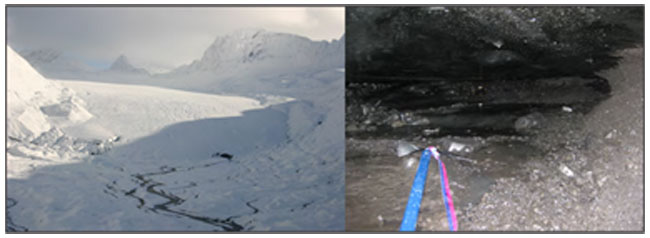The (sub)glacial biosphere, microbial activity at zero degrees Celsius and below:
Implications for elemental cycling in terrestrial systems and extraterrestrial exploration
By:
Mark Skidmore
Department of Earth Sciences, Montana State University, Bozeman, MT
| When: | Friday, Sept. 14, 2012, 10:30 a.m. to 11:30 a.m. Join us for coffee beginning at 10:00 a.m. |
| Where: | Seminar Conference Room, 10100 Burnet Road, Bldg 196-ROC, Austin, Texas 78758 |
| Host: | Britney Schmidt, UTIG |
Click for a Live Broadcast.

Abstract
Ice is an abundant phase of water in the solar system, however, we are currently limited in our knowledge of in situ microbial activity in icy environments, specifically in subglacial systems and in ice. Glaciological processes under ice masses, including ice sheets, produce conditions favorable for microbes by forming subglacial aquatic environments through basal melting and providing nutrients and energy for microbes from bedrock comminution.
Microbes have been found in subglacial waters, subglacial sediments and basal ice from all types of glacial systems and we have demonstrated activity of glacial isolates at temperatures as low as minus 30oC under laboratory conditions. We have also demonstrated subglacial microbial activity as a driver of chemical weathering in glaciated systems, through microbial, geochemical and isotopic analyses of glacial meltwaters and sediments and laboratory microcosms simulating in situ conditions.
The implications of our research findings will be discussed both in terms of elemental (C, N, S, N, Fe) cycling in the present day cryosphere and for glacial times in Earth history and for future astrobiological investigations.




